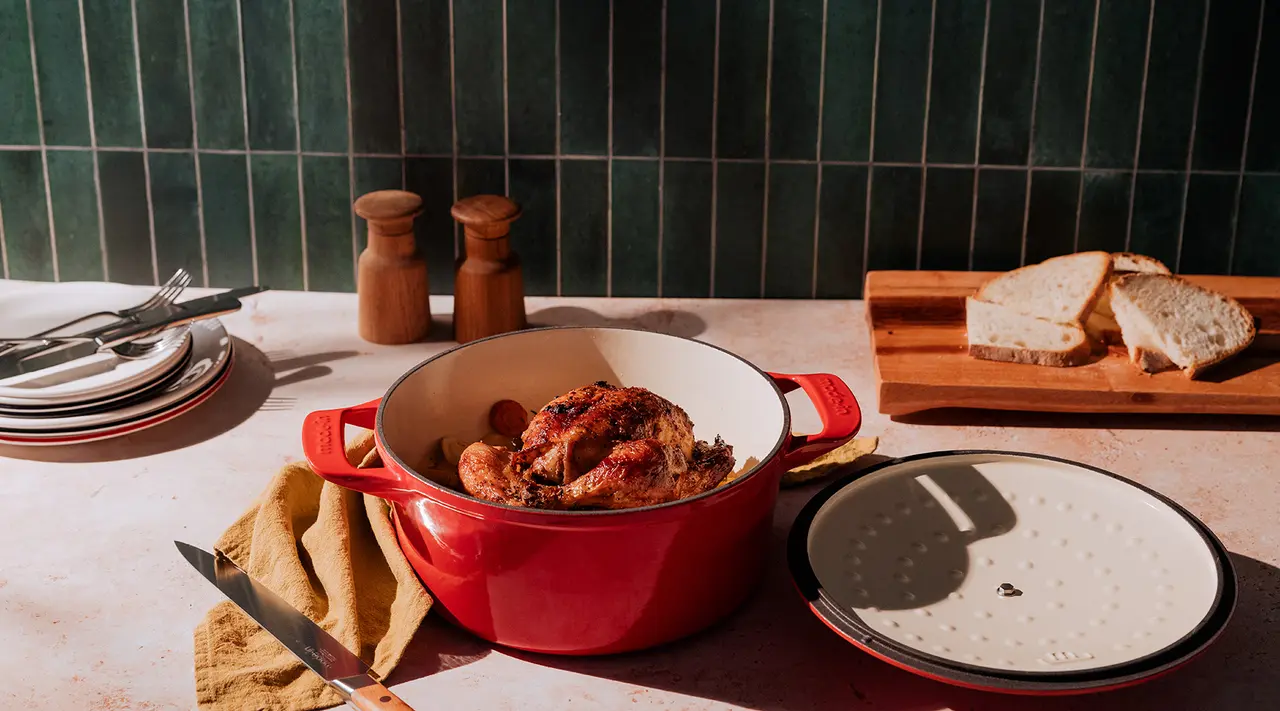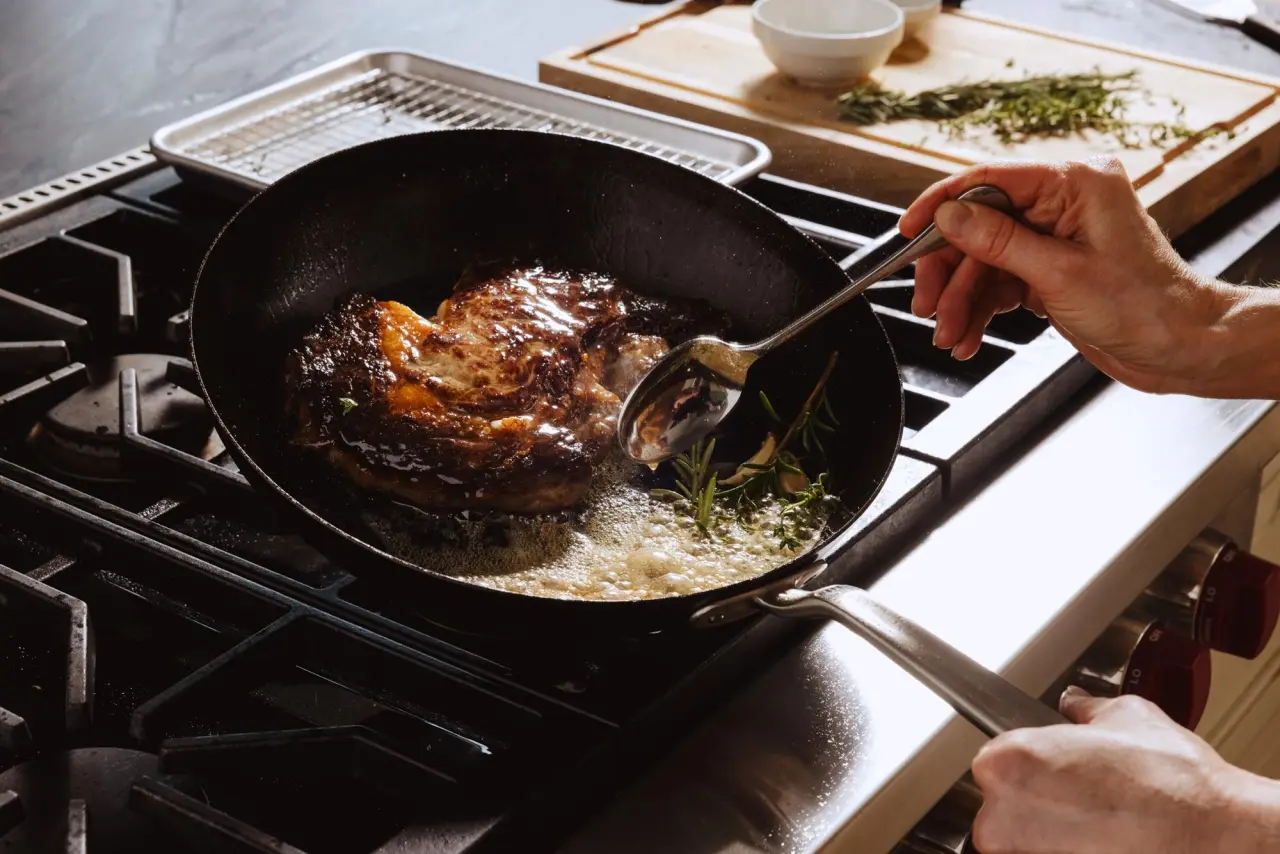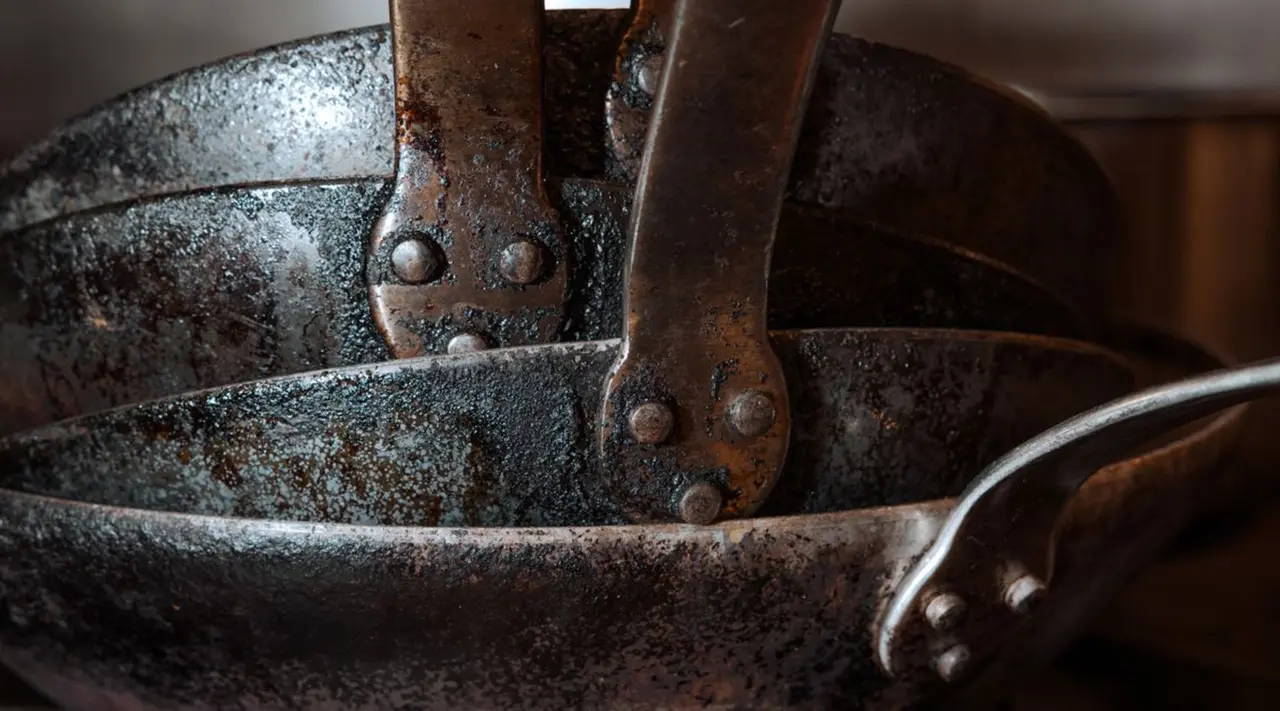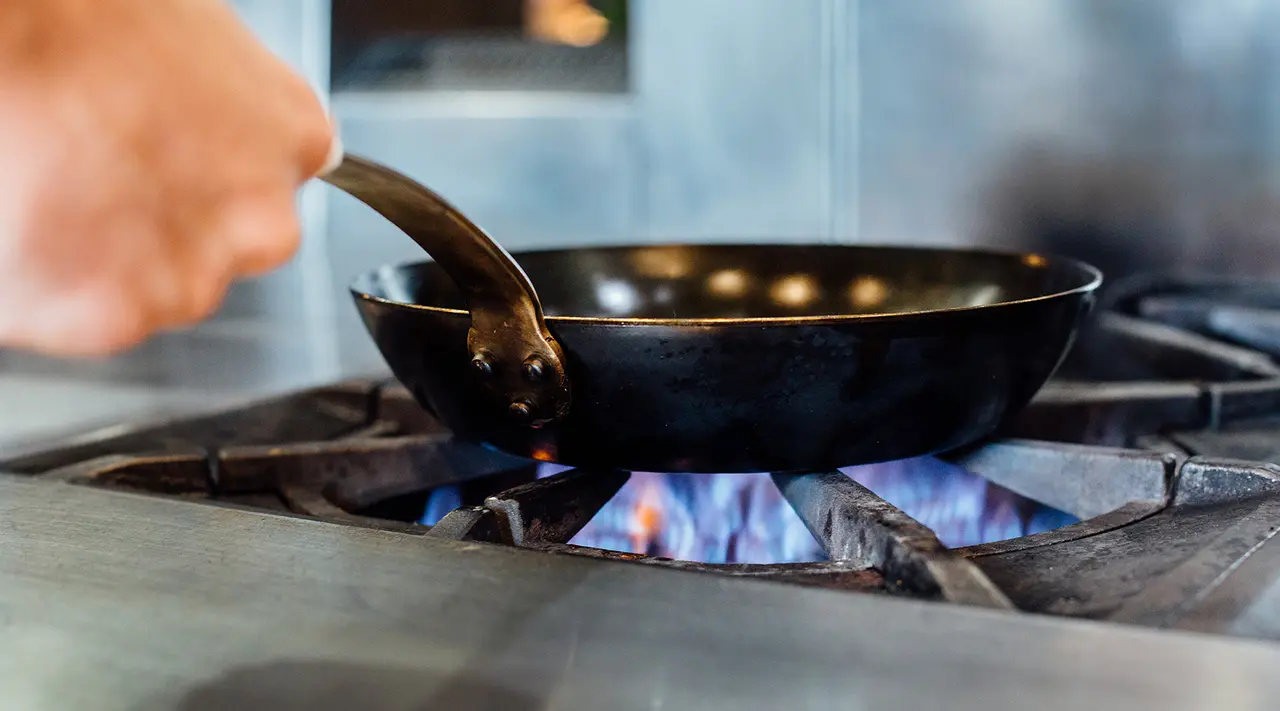With its glossy, naturally non stick, and heat-resistant coating, enameled cast iron is a perennial favorite in our kitchens. And while that coating does an excellent job of preventing food from getting stuck to your pot or pan, it’s not completely immune to burning and staining. Luckily, we—and many, many other cooks—have been in this exact spot before, and we’re going to lead you through it step by step.
Understanding Enameled Cast Iron
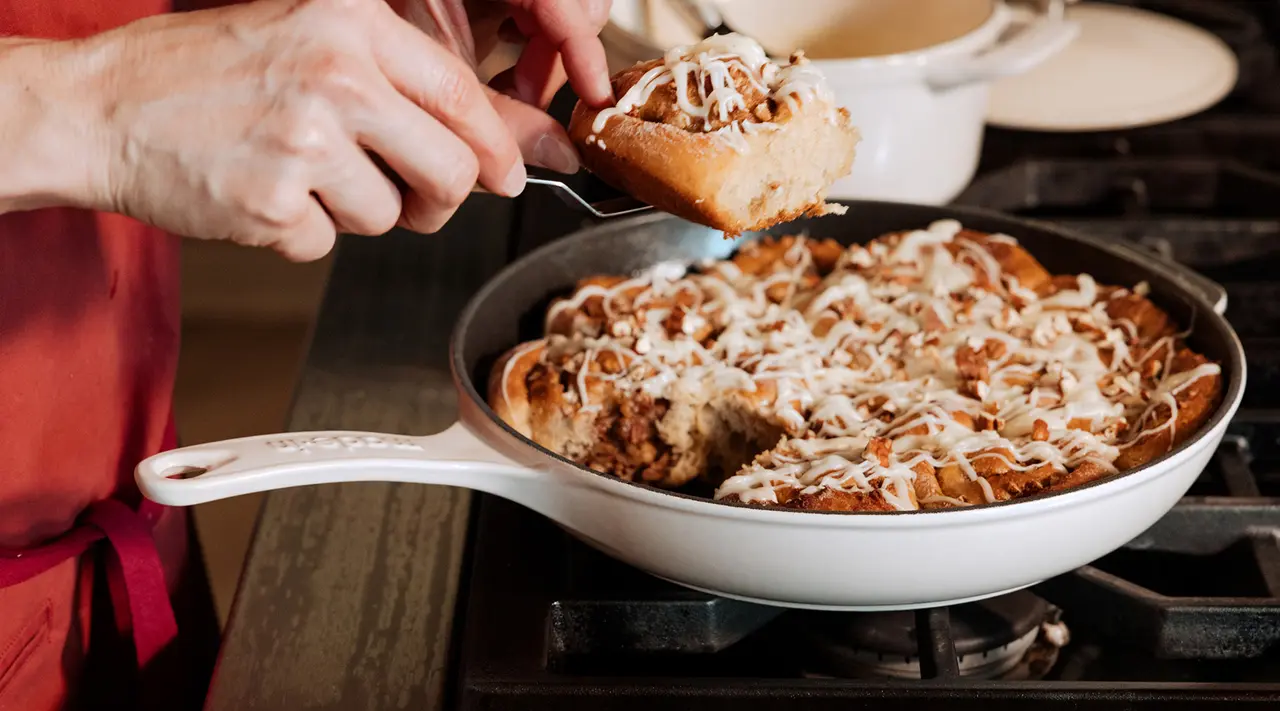
Your enameled cast iron pot or pan may look chic and refined from the outside, but on the inside, it’s made from the exact same stuff as your favorite cast iron skillet. The process of coating raw cast iron with enamel originated in France, where manufacturers added a thin layer of finely ground porcelain to each pot or pan and then fused it to the surface. Aside from looks, enamel also creates a protective layer, preventing the raw cast iron underneath from rusting or reacting to acids in your food. It’s also naturally non stick, and doesn’t get in the way of your pan’s ability to retain or transfer heat.
Step-by-Step Guide to Cleaning Burnt Enameled Cast Iron

If a burnt spot develops on the bottom of your enameled Dutch oven or skillet, don’t panic. Here’s what to do.
Step 1: Soak in warm, soapy water.
Fill the Dutch oven or pan with hot water and a gentle dish soap; let it soak for 15–30 minutes to loosen any burnt food.
Step 2: Scrape with a silicone or wooden utensil.
Soaking should have loosened any stubborn residue, but if not, empty the pan of any remaining water and soap and use a non-abrasive sponge, utensil, or scrubbing pad to remove any remaining food. If you were dealing with some carbonized residue, this may be enough—but if you’re dealing with a seriously scorched interior, proceed to step 3.
Step 3: Apply baking soda paste.
Create a paste by mixing equal parts baking soda and water. Carefully scrub it over the burnt areas and let it sit for 15–20 minutes.
Step 4: Scrub with a non-abrasive sponge.
Using a soft sponge, rub the baking soda paste all over the surface of the pan both inside and outside. If this isn’t enough to remove the burnt areas, proceed to the next step.
Step 5: Bring to a boil.
For tougher stains, add water and a couple extra tablespoons of baking soda to the pot or pan, then bring to a boil and let simmer for 10–15 minutes. Using a wooden spoon or other non-abrasive utensil, scrape at the burnt areas until loosened.
Step 6: Rinse and dry thoroughly.
Rinse the Dutch oven with warm water and dry it completely to prevent any water spots.
How to Deal with Stubborn Stains
If you’re looking at a leftover stain from your Sunday braise that’s not quite a burn (but is certainly annoying), here’s how to handle it.
Vinegar Soak:
Fill your enameled pot or pan with a paste of equal parts water and white vinegar (it will bubble up!). Let soak for 30 minutes, then scrub.
Baking Soda and Hydrogen Peroxide Paste:
For more persistent stains, mix baking soda and hydrogen peroxide into a thick paste, apply it to the stained areas, and let it sit before scrubbing with a gentle sponge.
Lemon and Salt Scrub:
Combine lemon juice and coarse salt for a natural cleaning solution that won’t damage enamel coating. Apply salt to the surface of the pan or the cut side of the lemon, then scrub. Rinse with warm water and dish soap.
What to Avoid When Cleaning Enameled Cast Iron
When cleaning your enameled cast iron cookware, steer clear of scratchy or abrasive materials like steel wool or stainless steel brushes. Also make sure to thoroughly dry the rim of your pot or pan, which is typically uncoated and therefore prone to rust. And on that note, never run enameled cookware through the dishwasher.
Care Tips for Enameled Cast Iron
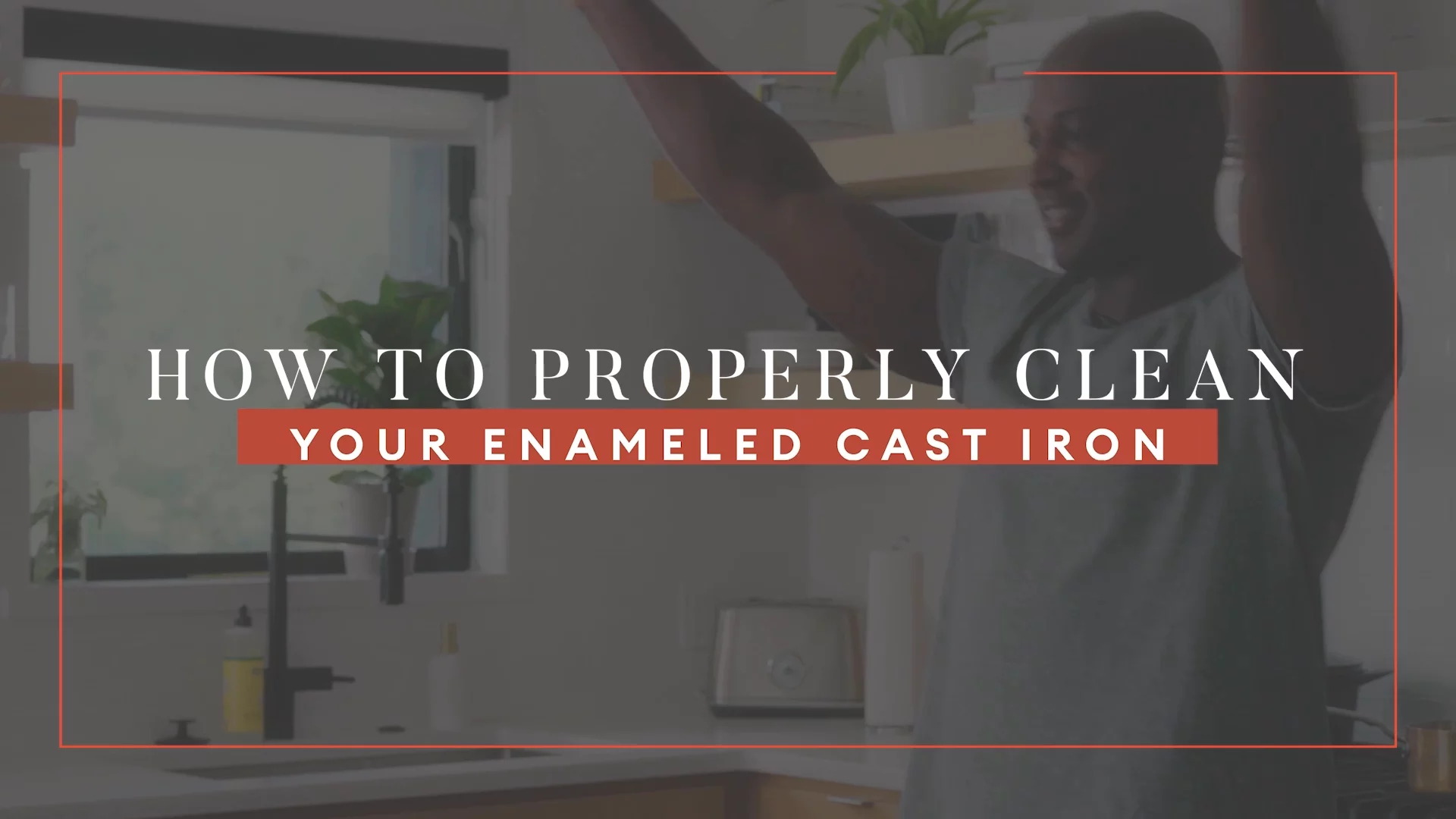
To keep your enameled cookware in the best shape possible, here’s what you need to keep in mind, care- and maintenance-wise.
Clean Regularly
Consistency is everything. Make sure to clean your enameled cast iron after every use, even if it’s just with warm soapy water and a soft sponge. This cuts down on buildup and makes it easier to clean down the road, without resorting to heavy duty methods like the above.
Store Carefully
Store your enameled cookware with the lid off—or with a towel between the lid and the pot or pan—to prevent moisture buildup. Avoid chipping and scratching the coating by storing your pot or pan away from other cookware items, or by nesting with a dish towel, Pan Protector, or cloth napkin between each layer.
Prevent Burnt Food and Stains
Prevent your enameled cookware from getting burned, stained, or discolored in the first place by sticking to low or medium heat whenever possible. You should also remember to preheat your pot or pan, using a small amount of oil or fat to keep food from sticking, and avoid leaving food unattended for long periods—especially when using high heat.
Ready to Cook?
If you’re like us, scrubbing a Dutch oven is probably the last thing you want to do with your free time (unless you’re one of those who loves washing dishes—we see you and appreciate you). Once you see what a difference it makes, however, you’ll come to appreciate—maybe even enjoy—the process. Then go get started on these oven-baked mashed potatoes.
